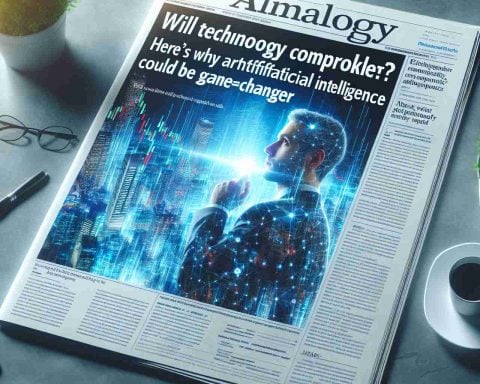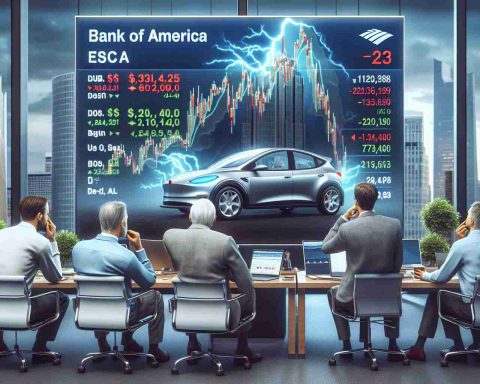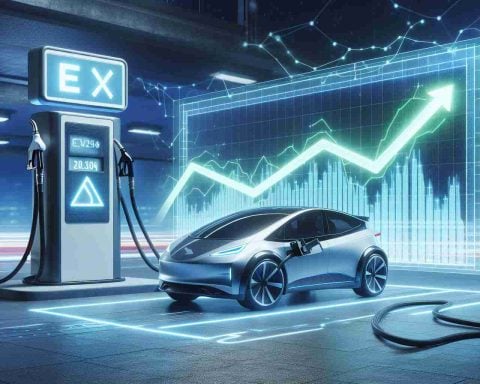The Future of Electric Vehicles Is Here
Imagine a world where recharging your electric vehicle takes as little time as a quick gas stop. The possibility of 5-minute EV charging is becoming a reality, potentially transforming the electric vehicle landscape.
Traditionally, EV charging times have raised concerns among potential users, with wait times averaging anywhere from 20 minutes to several hours in the US. This new rapid charging technology promises to eliminate such delays, inviting more people to consider making the switch to electric.
Around the globe, manufacturers are competing to create batteries that can handle this fast charging capability. Innovative battery solutions are not just a dream; they’re being developed and tested right now. For instance, China recently announced significant advancements in battery technology. In August, Zeekr launched a new battery with lightning-fast charging capabilities, claiming to reach between 10% to 80% in just over 10 minutes.
Further pushing the envelope, CATL revealed their Shenxing Plus battery, capable of delivering an impressive 600 kilometers of range in only 10 minutes. These breakthroughs mark an exciting movement toward the realization of 5-minute charging stations.
However, challenges remain, such as the need for improved charging infrastructure and the balance between battery sizes and costs. For this innovation to thrive, high-powered charging stations must become more widespread. With China’s established position in the EV sector, the country is likely to lead the charge in making this dream accessible.
Revolutionizing the Road: The Emergence of Ultra-Fast EV Charging
Electric vehicles (EVs) are on the brink of a significant transformation with the advent of ultra-fast charging technologies that promise to reshape the driving experience. As EV adoption continues to surge globally, one of the key barriers to widespread acceptance has been charging times. The introduction of 5-minute EV charging is not just an ambitious goal; it is becoming a tangible reality that could attract more drivers to switch from traditional gasoline vehicles.
The Technology Behind Fast Charging
Recent innovations in battery technology are paving the way for rapid charging capabilities. Companies like CATL and Zeekr have been at the forefront of developing batteries that significantly reduce charging times.
– Zeekr’s Lightning-Fast Battery: Zeekr recently launched a battery system that can charge from 10% to 80% in just over 10 minutes. This leap forward demonstrates how advanced manufacturing processes can revolutionize battery life and efficiency.
– CATL’s Shenxing Plus Battery: Another breakthrough comes from CATL, which introduced the Shenxing Plus battery, allowing drivers to gain about 600 kilometers (approximately 373 miles) of range with just a 10-minute charge. Such advancements highlight how battery design can meet the growing demands of long-distance travel.
Infrastructure Development
The success of fast EV charging technology hinges on the development of robust charging infrastructure. For rapid charging to be feasible on a large scale, high-powered charging stations need to become more ubiquitous in urban and rural locations alike. Here are some trends:
– Expansion of Charging Networks: Companies and governments are investing in expanding charging station networks to accommodate the influx of EVs. This includes placing charging stations at strategic locations such as highways, malls, and residential areas.
– Innovative Charging Solutions: Emerging technologies such as wireless charging and portable charging units are gaining attention, promising to make charging more convenient and accessible.
Use Cases and Market Predictions
As fast charging capabilities improve, various use cases will emerge:
– Urban Commuting: For city dwellers, fast charging stations could dramatically reduce downtime, allowing seamless transition between electric and traditional vehicles.
– Long-Distance Travel: Travelers will appreciate the ability to quickly recharge, making electric vehicles more appealing for road trips and long journeys.
Market analysts predict that the EV market will continue its exponential growth, with forecasts suggesting that EV sales might represent over half of all new vehicle sales by 2030. This trend mirrors the increasing consumer demand for sustainable transportation options and larger government initiatives aimed at reducing carbon emissions.
Challenges and Limitations
Despite the excitement surrounding ultra-fast charging, several challenges remain:
– Battery Degradation: Frequent high-powered charging might lead to faster battery degradation, an aspect manufacturers must address.
– Cost Concerns: While innovations are promising, the cost of development, production, and implementation of these advanced battery systems and charging infrastructure could be significant.
Security and Sustainability Aspects
The transition to electric vehicles does not come without its considerations regarding security and sustainability. Automakers must ensure that their systems are protected from cyber threats as more vehicles become connected. Additionally, manufacturers are focusing on sourcing materials responsibly to minimize environmental impact, thereby enhancing the sustainability of EV technology.
Conclusion
In conclusion, the evolution of fast EV charging technology is reshaping the automotive landscape, offering a glimpse into a future where refueling electric vehicles takes mere minutes. As global manufacturers invest in this technology and governments build the necessary infrastructure, we are moving closer to an electric transportation revolution.
For more information about the latest in electric vehicle technology, visit electrive.com.










